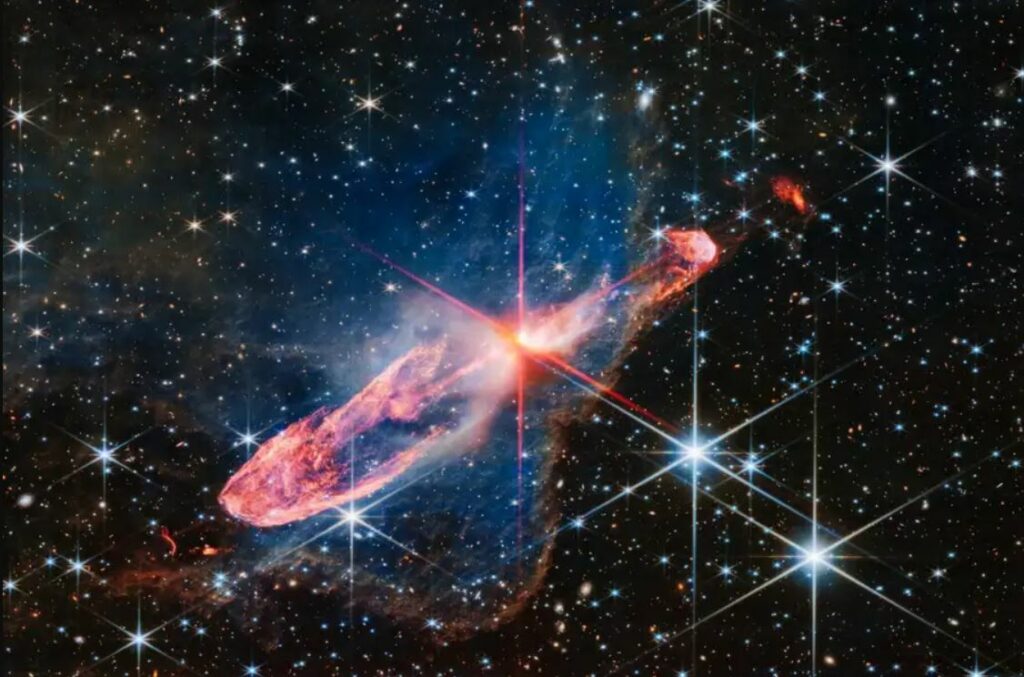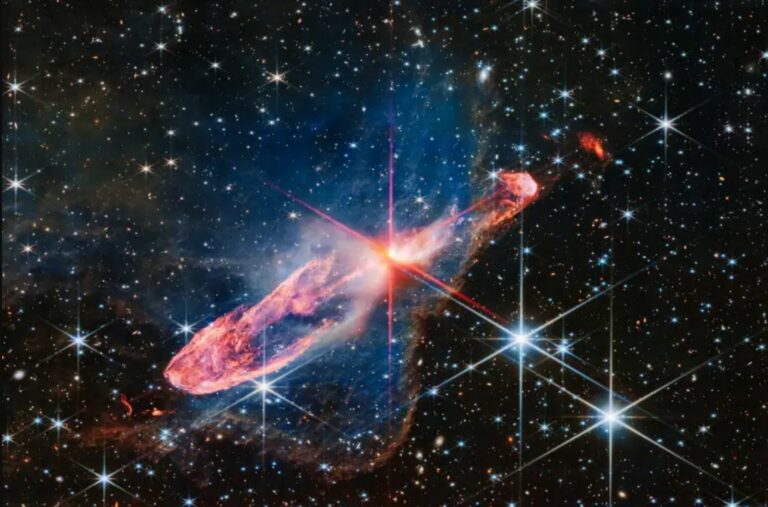The James Webb Space Telescope Is Poised to Soon Witness the Earliest Stars Formed Post Big Bang.
The James Webb Space Telescope is looking ever further back in the universe’s history and the unexpected high luminosity of the sources it sees hints that the way we think stars form from gas in the early universe may need revision, astrophysicist Richard Ellis has revealed at New Scientist Live

STScI Copyright: NASA, ESA, CSA/STScI
We are tantalisingly close to seeing the beginning of the cosmic dawn, the time when the first stars and galaxies formed, with the James Webb Space Telescope (JWST).
“In the last 12 months, we’ve made more progress probably than within the last 20 years, because it’s such a powerful telescope,” says astrophysicist Richard Ellis at University College London.
Ellis spoke to a crowd at New Scientist Live at the ExCeL Centre in London on 7 October about the latest findings from JWST, which has been operational since 2022 and is still producing new science at a tremendous rate. “It’s a talk I couldn’t have given even six months ago,” he tells New Scientist.
Some of the most striking results have come from observations of the most distant galaxies that we can see, which correspond to a time just a few hundred million years after the universe began. These galaxies appear to be more luminous than theorists predicted, suggesting that we have probed back to an era when the physical conditions of how gas is converted to stars might be quite different.
“They’re systematically brighter by factors of three to five, which may not sound a lot, but if we go to later times when the universe is older, these theoretical models match the data extremely well,” says Ellis. It seems that when we use the JWST to look beyond what the Hubble Space Telescope can see, further back in time to earlier galaxies just 400 million years after the big bang, we find that something is different, he says.
There are a few explanations as to why this is happening, such as early stars being systematically more massive than those we see today and therefore giving off more light, or early galaxies forming their stars more quickly than we expect.
If either scenario, or a combination of them, is true, seeing these different conditions means we could be close to “cosmic dawn”, says Ellis. “We’re not in a cosmological crisis. We’re not at the point of giving up the cold dark matter view or abandoning the big bang.”

Richard Ellis
The chemical composition of these galaxies also suggests that we are getting close to observing objects from the beginning of the cosmic dawn. The first stars should be almost entirely made up of hydrogen and helium; it is only later in their lives that they produce heavier elements.
Looking at the earliest stars we have seen, “we can calculate the oxygen, carbon and nitrogen abundance, compared to the sun, and we’re now down to between 1 and 4 per cent at these early times,” says Ellis. “So clearly the universe is heading towards a pristine state in the most distant galaxies that we see.”
Because early stars can be born and die in just 5 million years, and can pollute nearby stars with the heavier elements they have made, there is an exceptionally narrow window to try to observe them in an immaculate state. If you find a pristine star, it means there hasn’t been enough time for the stars to mix and it must be from very early in the galaxy.
One way to find this window is by systematically measuring a large sample of galaxies and observing them with JWST to analyse their chemical make-up. This will take a large amount of observation time, but it is possible that we will see results in the next few years, says Ellis.
Source: NewScientist
Do not forget to share your opinion with us to provide you with the best posts !




0 Comments